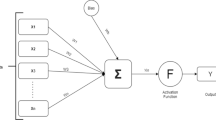Abstract
Propensity scorecards allow forecasting, which bank customers would like to be granted new credits in the near future, through assessing their willingness to apply for new loans. Kalman filtering can help to monitor scorecard performance. Data from successive months are used to update the baseline model. The updated scorecard is the output of the Kalman filter. There is no assumption concerning the scoring model specification and no specific estimation method is presupposed. Thus, the estimator covariance is derived from the bootstrap. The focus is on a relationship between the score and the natural logarithm of the odds for that score, which is used to determine a customer's propensity level. The propensity levels corresponding to the baseline and updated scores are compared. That comparison allows for monitoring whether the scorecard is still up-to-date in terms of assigning the odds. The presented technique is illustrated with an example of a propensity scorecard developed on the basis of credit bureau data.




Similar content being viewed by others
References
Anderson R (2007). The Credit Scoring Toolkit . Oxford University Press: New York.
Greene WH (2000). Econometric Analysis . Prentice-Hall: Upper Saddle River.
Harvey AC (1990). Forecasting, Structural Time Series Models and the Kalman Filter . Cambridge University Press: Cambridge.
Kalman RE (1960). A new approach to linear filtering and prediction problems . Trans ASME J Basic Eng 82(Series D): 35–45.
Lucas A (2004). Updating scorecards: Removing the mystique . In: Thomas LC, Edelman DB and Crook JN (eds). Readings in Credit Scoring: Foundations, Developments, and Aims. Oxford University Press: New York, pp. 93–109.
Mays E (2004). Credit Scoring for Risk Managers. The Handbook for Lenders . Thomson South-Western: Mason, Ohio.
Schiffman R (2001). Evaluating and monitoring your model . In: Mays E (ed). Handbook of Credit Scoring. Glenlake Publishing Company, Ltd.: Chicago, pp. 285–300.
Siddiqi N (2005). Credit Risk Scorecards: Developing and Implementing Intelligent Credit Scoring . Wiley: New York.
Thomas LC, Edelman DB and Crook JN (2002). Credit Scoring and Its Applications . SIAM: Philadelphia.
Thomas LC (2009). Consumer Credit Models: Pricing, Profit, and Portfolios . Oxford University Press: New York.
Van Gestel T and Baesens B (2009). Credit Risk Management. Basic Concepts: Financial Risk Components, Rating Analysis, Models, Economic and Regulatory Capital . Oxford University Press: New York.
Welch G and Bishop G (2006). An introduction to the Kalman filter. Technical Report TR 95-041, Department of Computer Science, University of North Carolina, Chapel Hill, http://www.cs.unc.edu/~welch/media/pdf/kalman_intro.pdf, accessed 2 June 2008.
Wells C (1996). The Kalman Filter in Finance . Kluwer Academic Publishers: Dordrecht.
Whittaker J, Whitehead C and Somers M (2007). A dynamic scorecard for monitoring baseline performance with application to tracking a mortgage portfolio . J Opl Res Soc 58: 911–921.
Acknowledgements
I am grateful to an anonymous referee for suggestions and comments that helped improve this paper. I would also like to say thank you to Sophie N'Jai for proof-reading the draft.
Author information
Authors and Affiliations
Corresponding author
Rights and permissions
About this article
Cite this article
Bijak, K. Kalman filtering as a performance monitoring technique for a propensity scorecard. J Oper Res Soc 62, 29–37 (2011). https://doi.org/10.1057/jors.2009.183
Received:
Accepted:
Published:
Issue Date:
DOI: https://doi.org/10.1057/jors.2009.183




